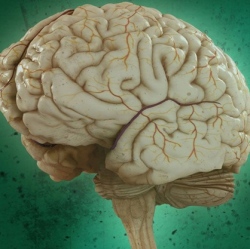
Researchers used electricity on certain regions in the brain of a patient with chronic, severe facial pain to release an opiate-like substance that’s considered one of the body’s most powerful painkillers.
The findings help explain what happens in the brain that decreases pain during the brief sessions of electricity, says Alexandre DaSilva, the senior researcher in the study from the University of Michigan School of Dentistry.
DaSilva and colleagues intravenously administered a radiotracer that reached important brain areas in a patient with trigeminal neuropathic pain (TNP), a type of chronic, severe facial pain.
They applied the electrodes and electrically stimulated the skull right above the motor cortex of the patient for 20 minutes during a PET scan (positron emission tomography). The stimulation is called transcranial direct current stimulation (tDCS).
The radiotracer was specifically designed to measure, indirectly, the local brain release of mu-opioid, a natural substance that alters pain perception. In order for opiate to function, it needs to bind to the mu-opioid receptor (the study assessed levels of this receptor).
“This is arguably the main resource in the brain to reduce pain,” DaSilva said. “We’re stimulating the release of our (body’s) own resources to provide analgesia.
